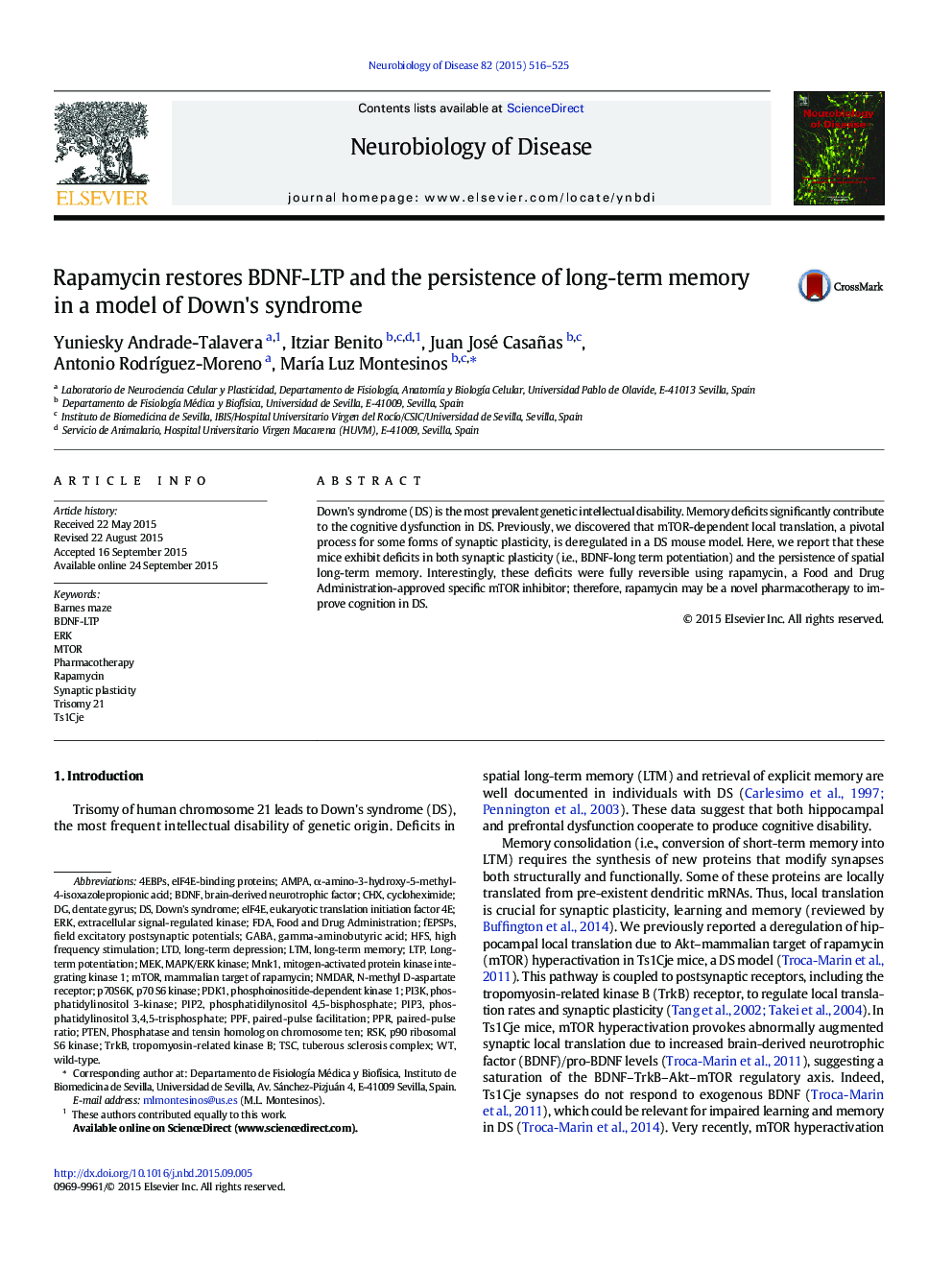| Article ID | Journal | Published Year | Pages | File Type |
|---|---|---|---|---|
| 6021653 | Neurobiology of Disease | 2015 | 10 Pages |
â¢BDNF-LTP is absent in the CA1 region of Ts1Cje (Down's syndrome model) mice.â¢Paired-pulse facilitation and basal synaptic transmission are impaired in Ts1Cje mice.â¢Persistence of spatial long-term memory (Barnes maze) is impaired in Ts1Cje mice.â¢Rapamycin recovers all the Ts1Cje synaptic and memory phenotypes mentioned above.
Down's syndrome (DS) is the most prevalent genetic intellectual disability. Memory deficits significantly contribute to the cognitive dysfunction in DS. Previously, we discovered that mTOR-dependent local translation, a pivotal process for some forms of synaptic plasticity, is deregulated in a DS mouse model. Here, we report that these mice exhibit deficits in both synaptic plasticity (i.e., BDNF-long term potentiation) and the persistence of spatial long-term memory. Interestingly, these deficits were fully reversible using rapamycin, a Food and Drug Administration-approved specific mTOR inhibitor; therefore, rapamycin may be a novel pharmacotherapy to improve cognition in DS.
